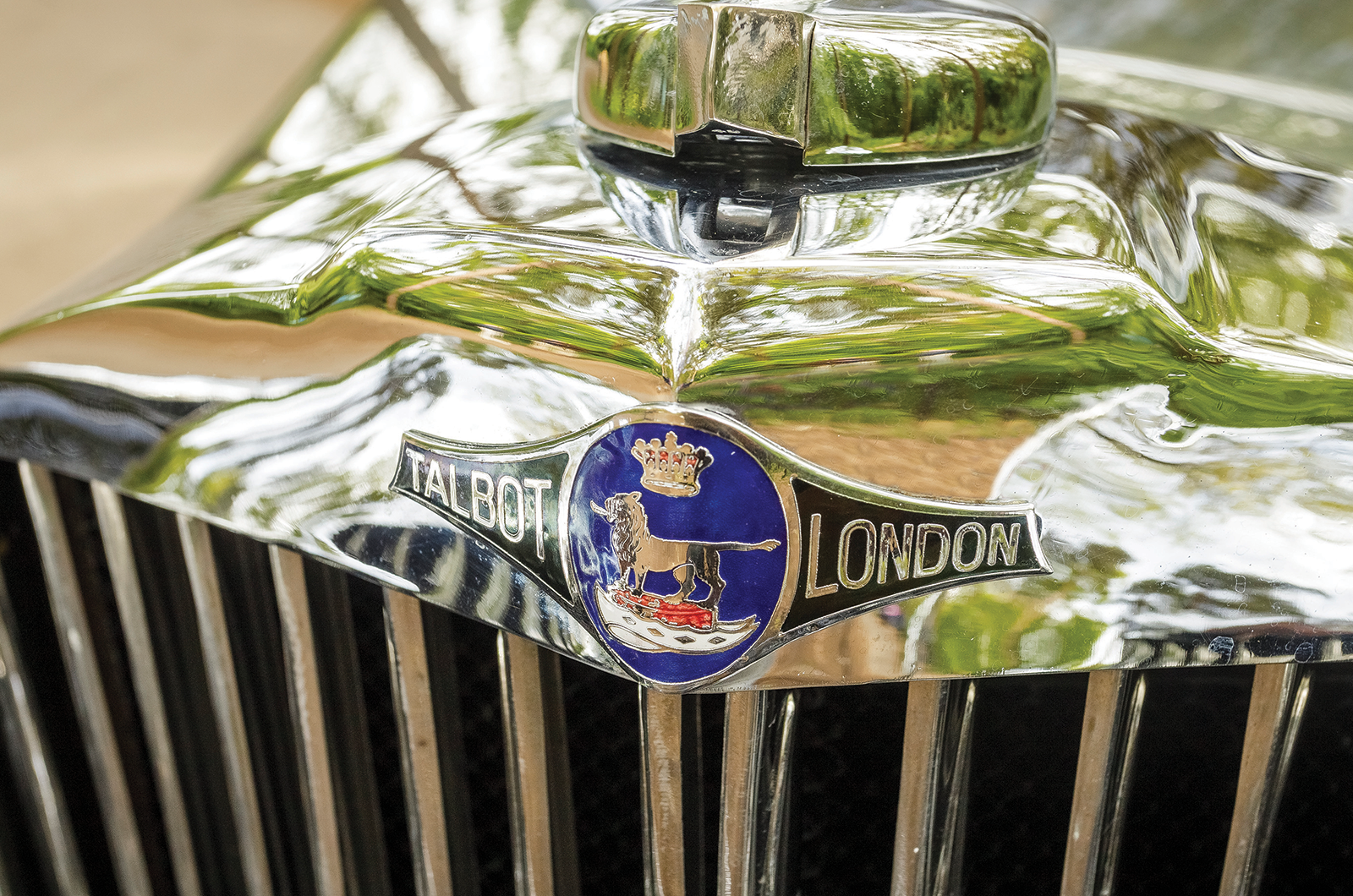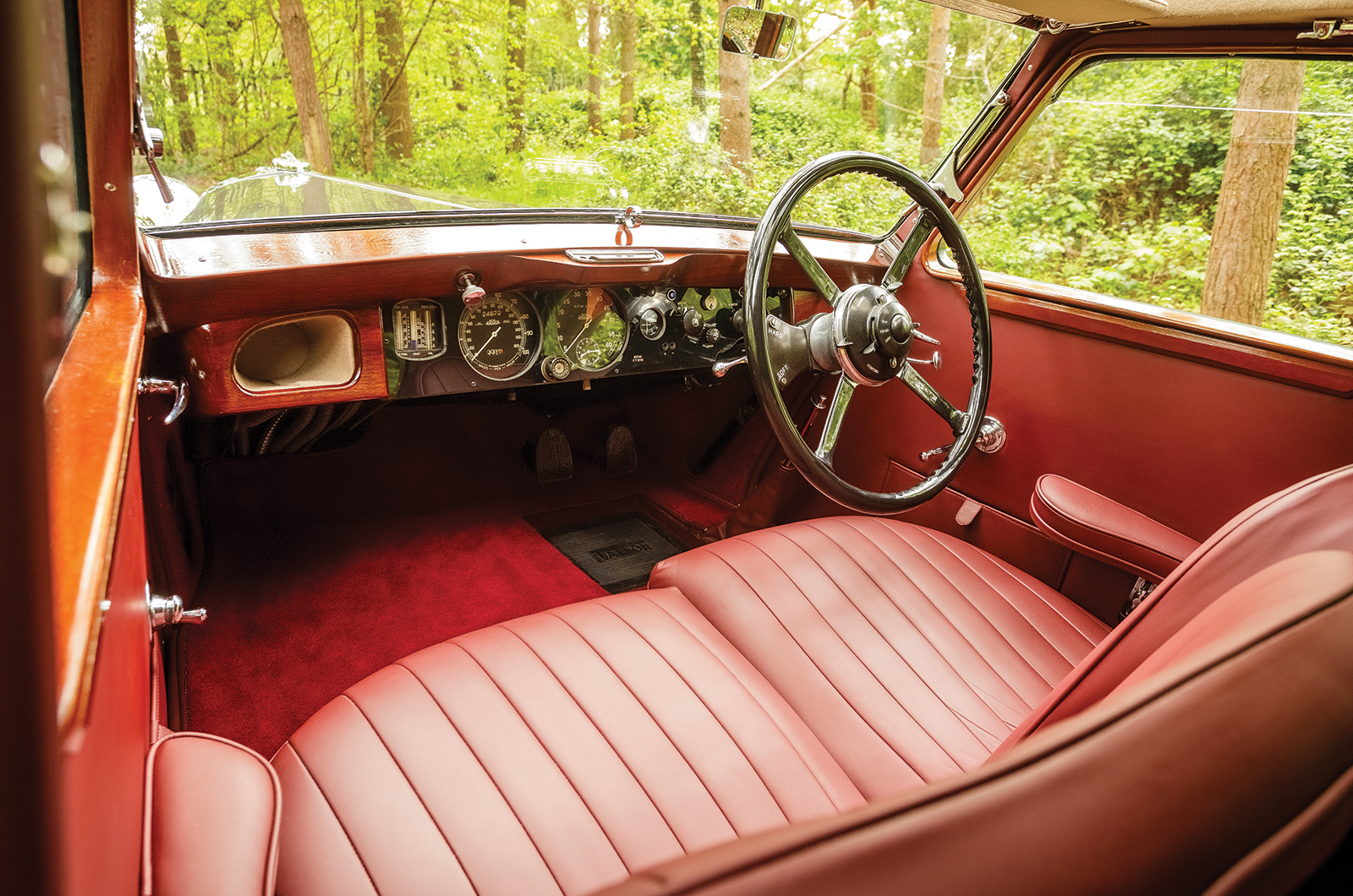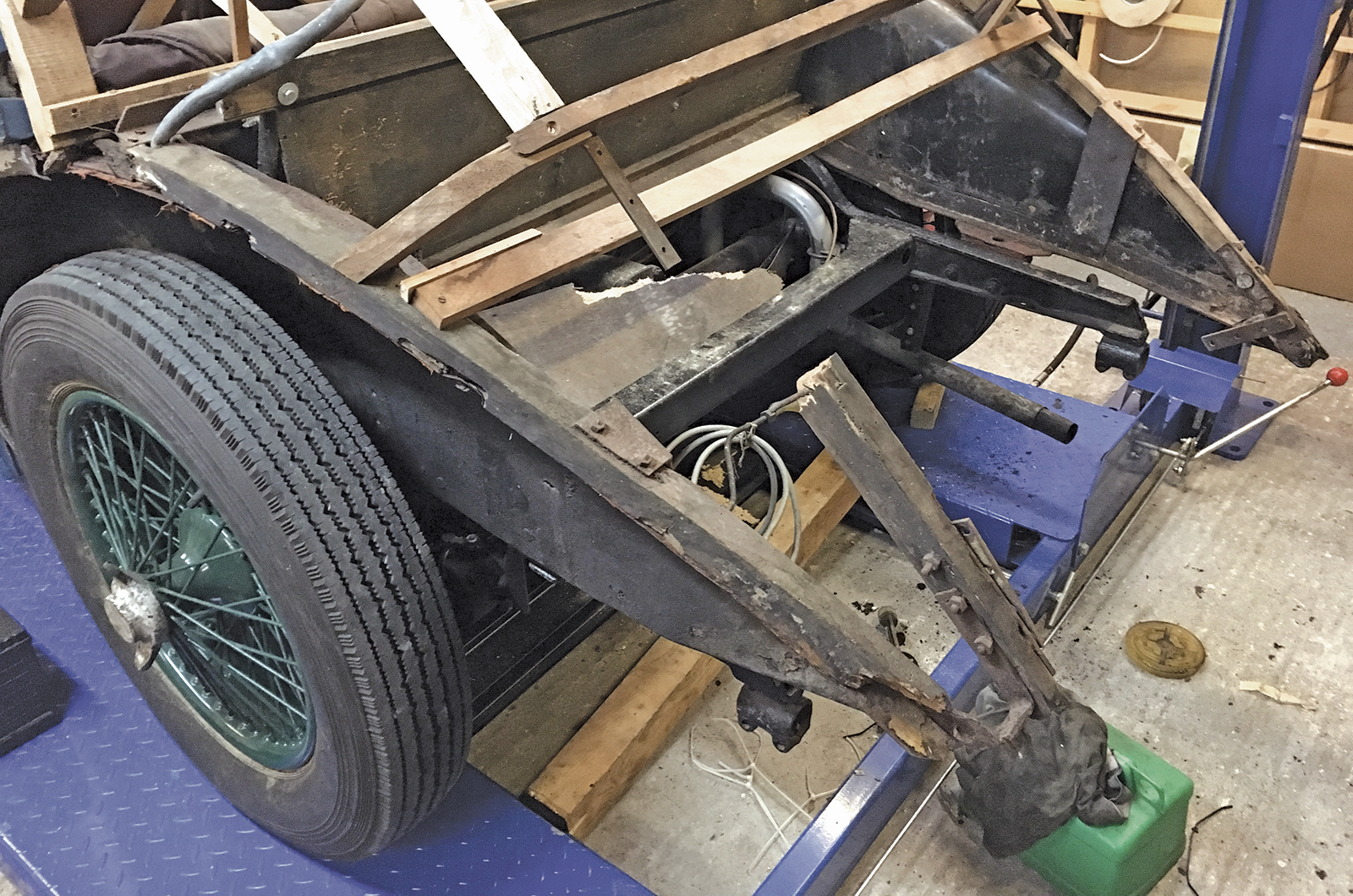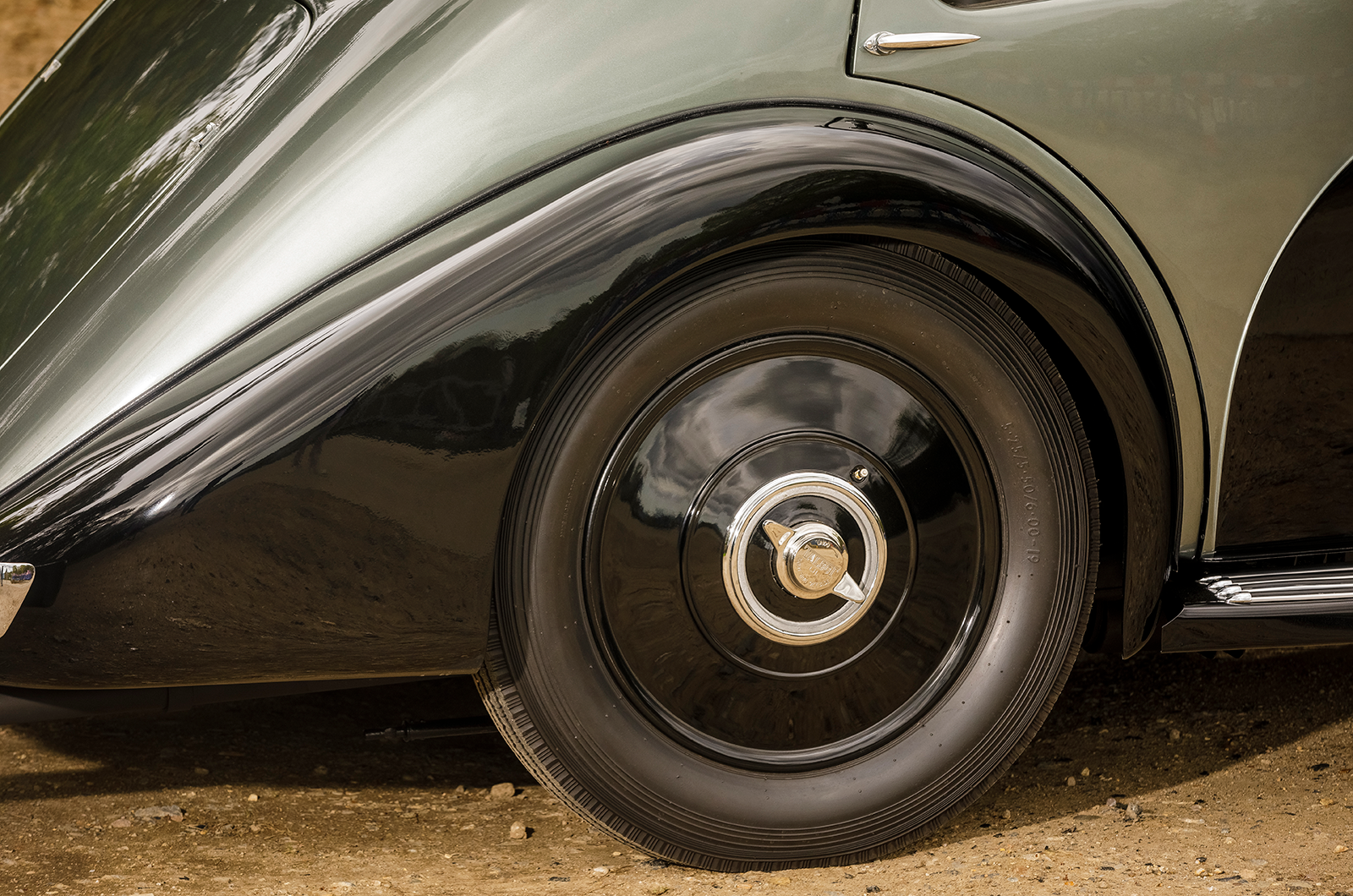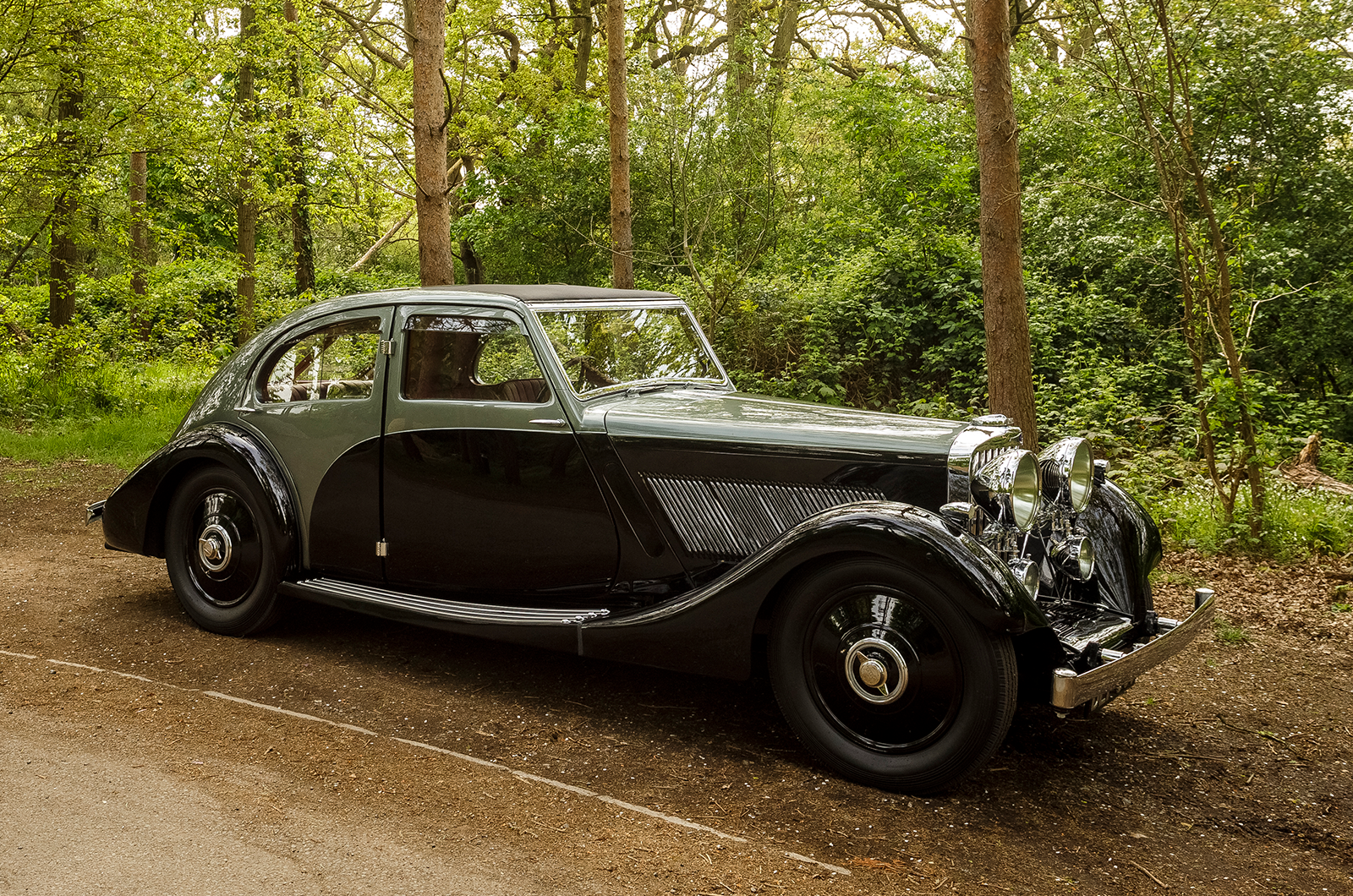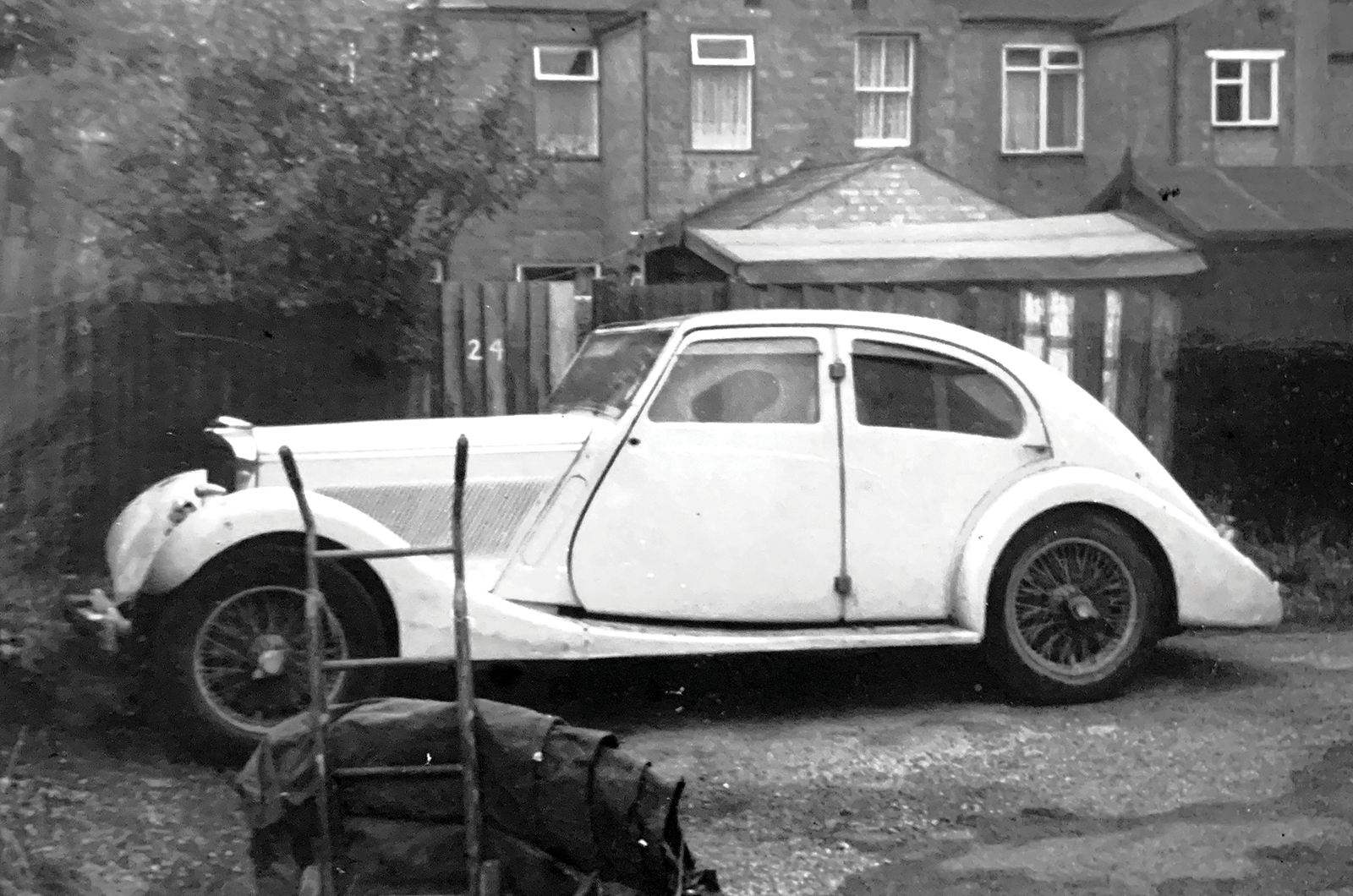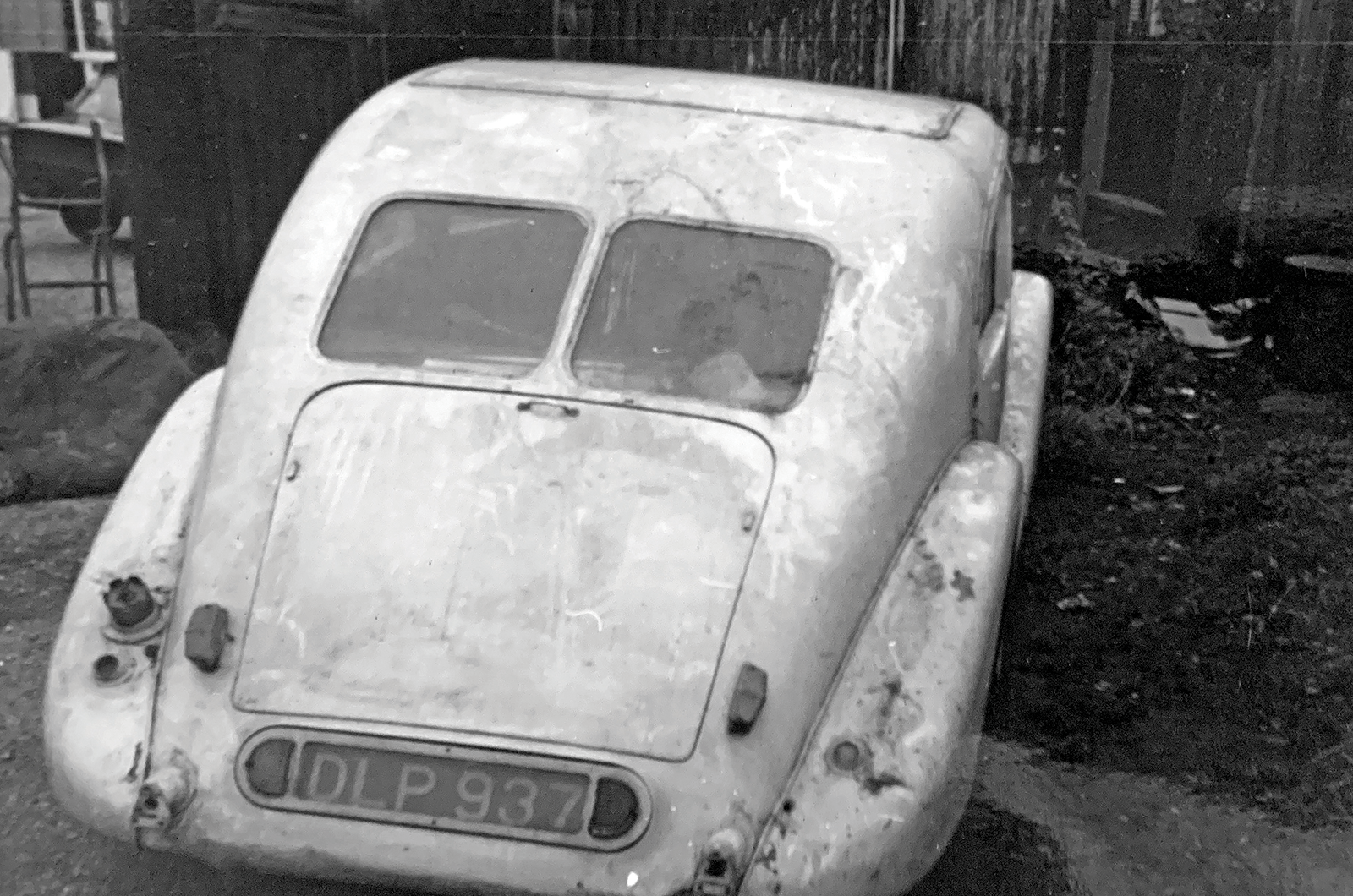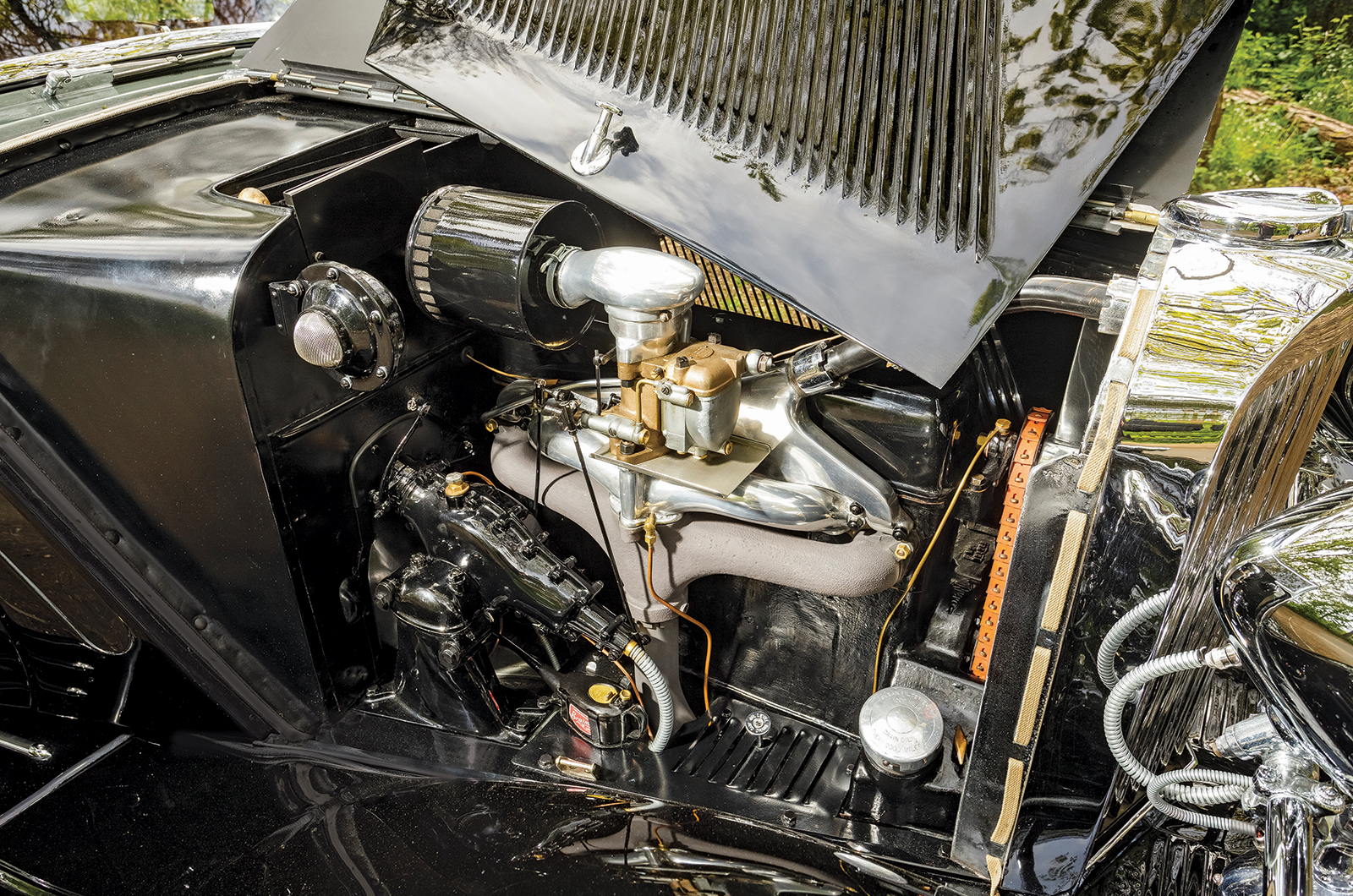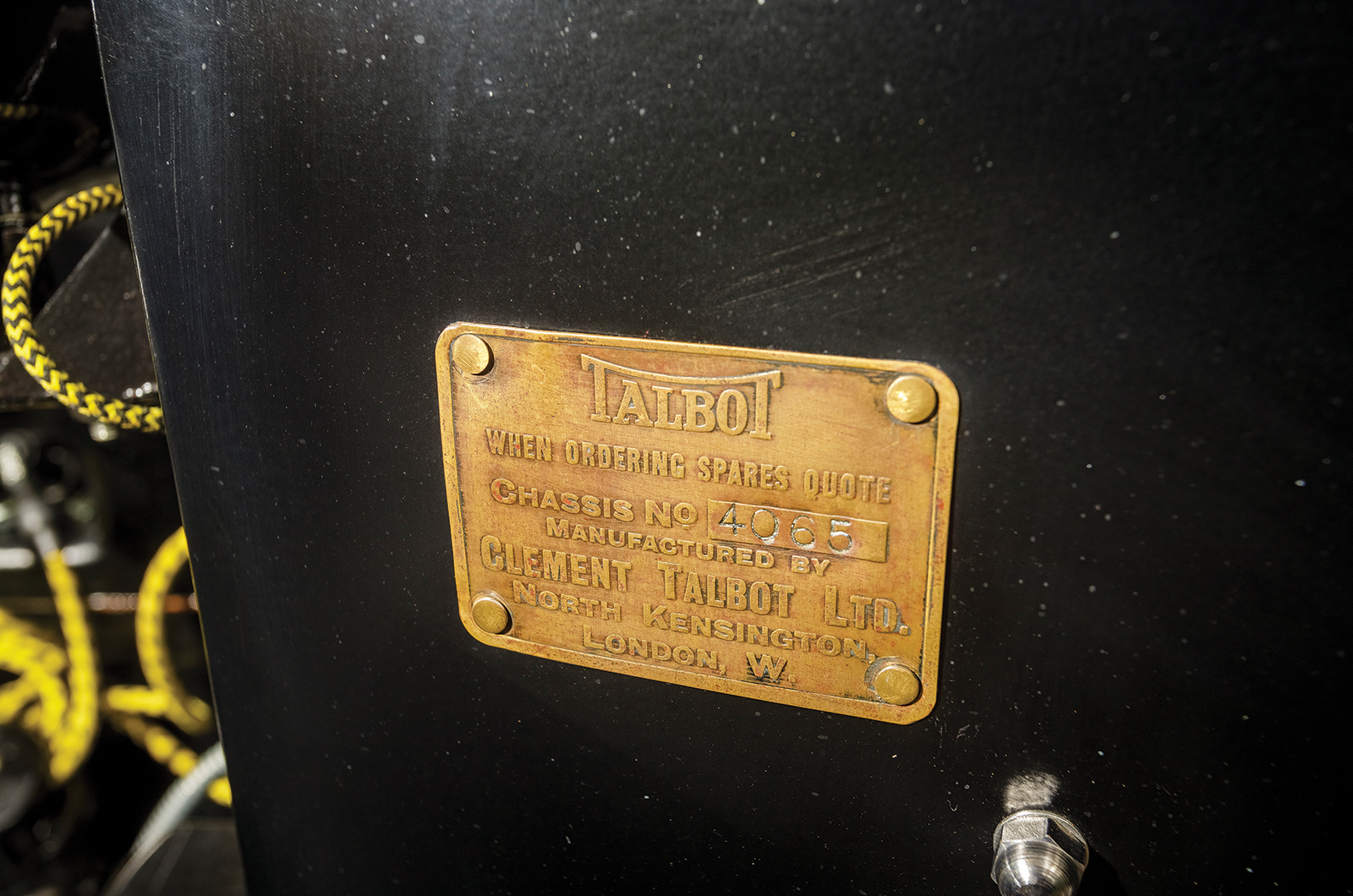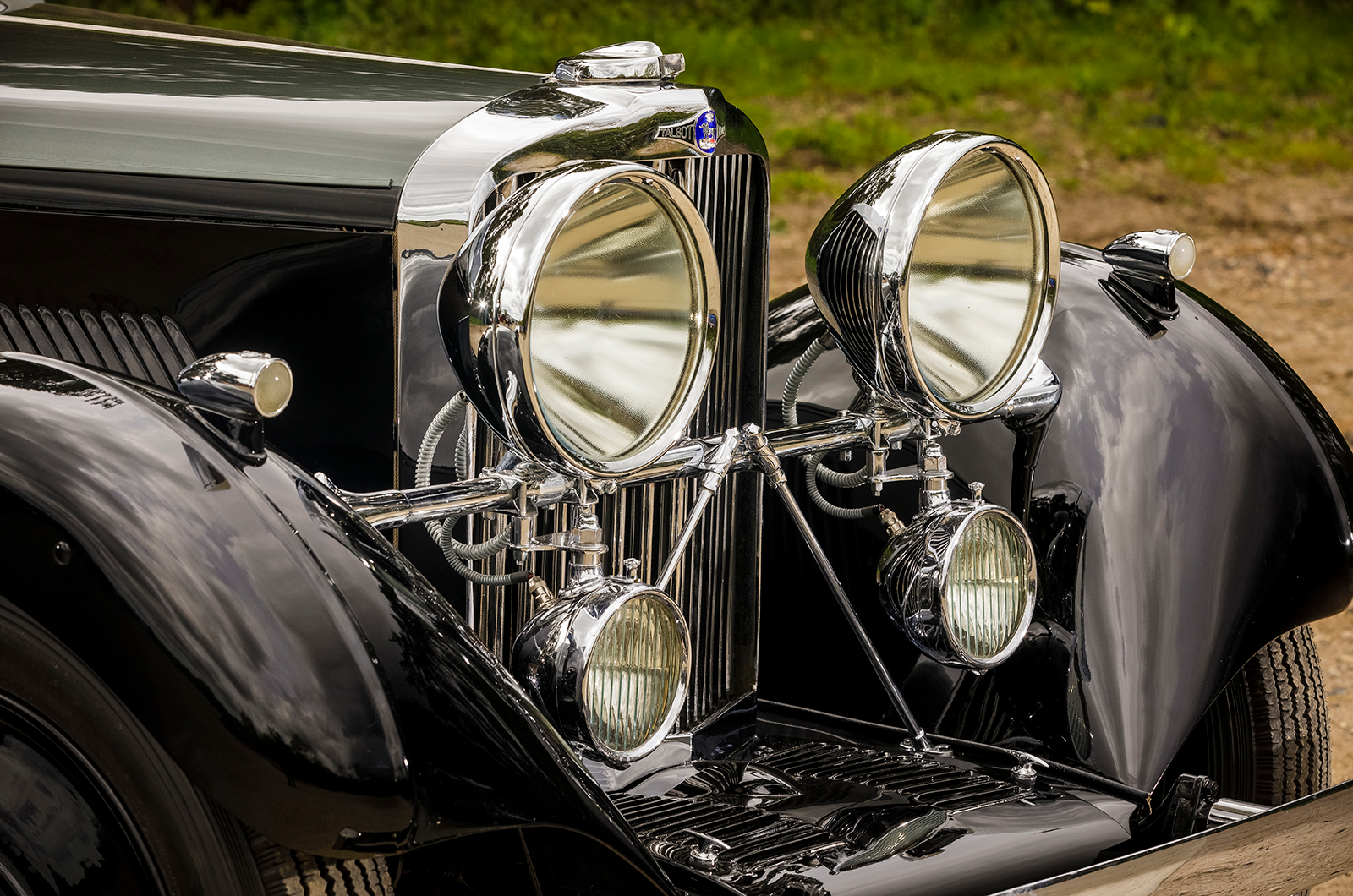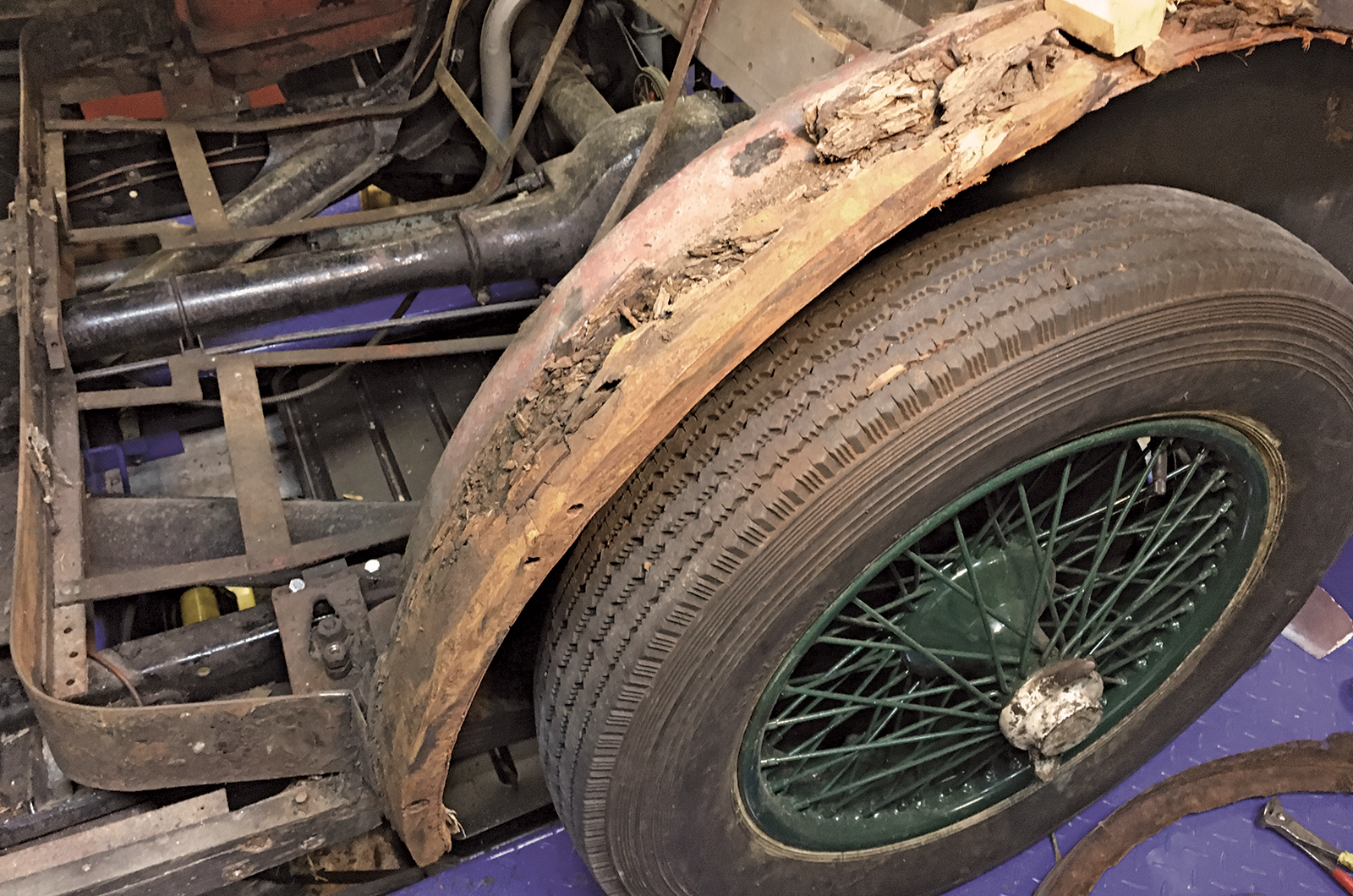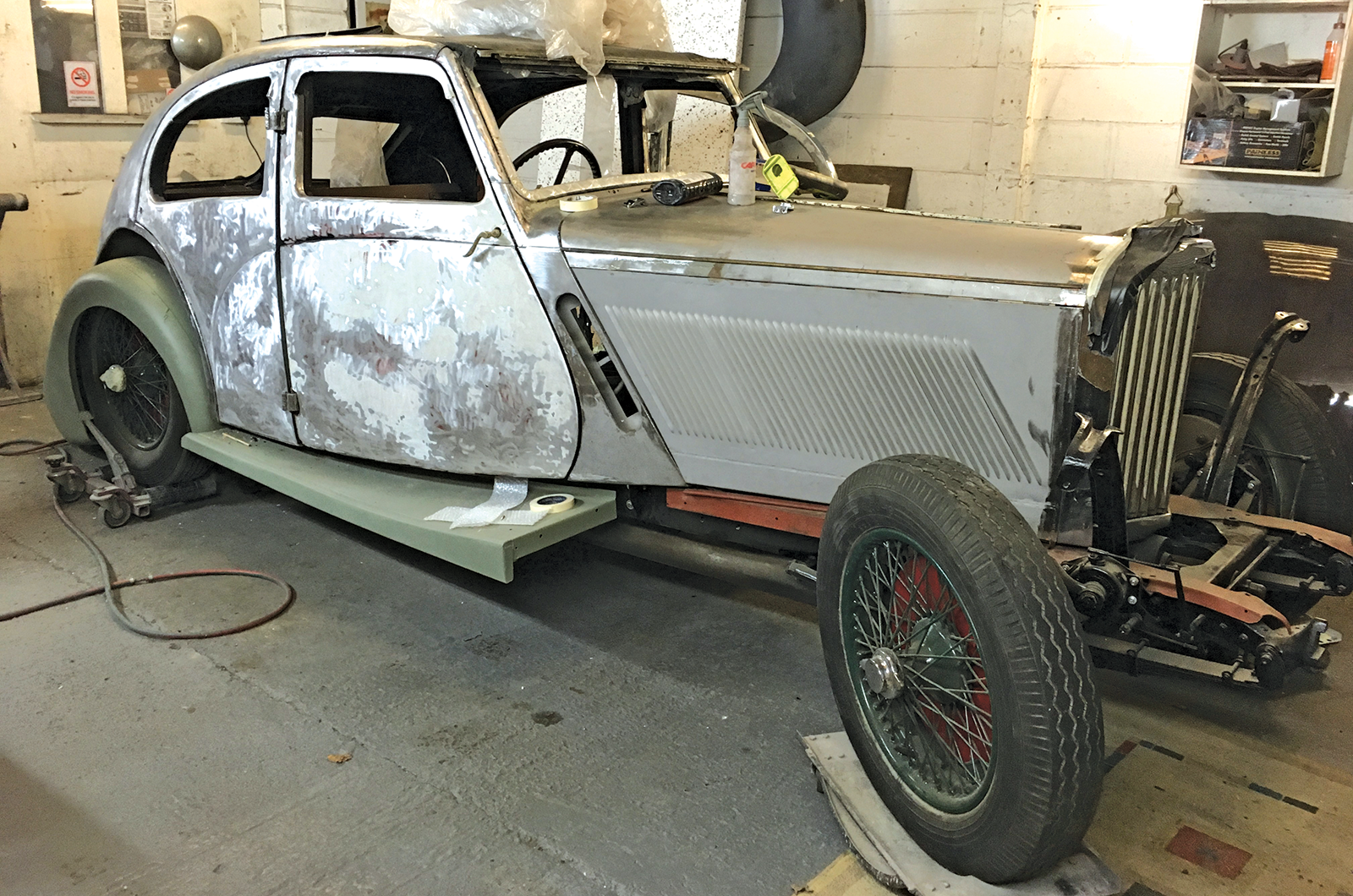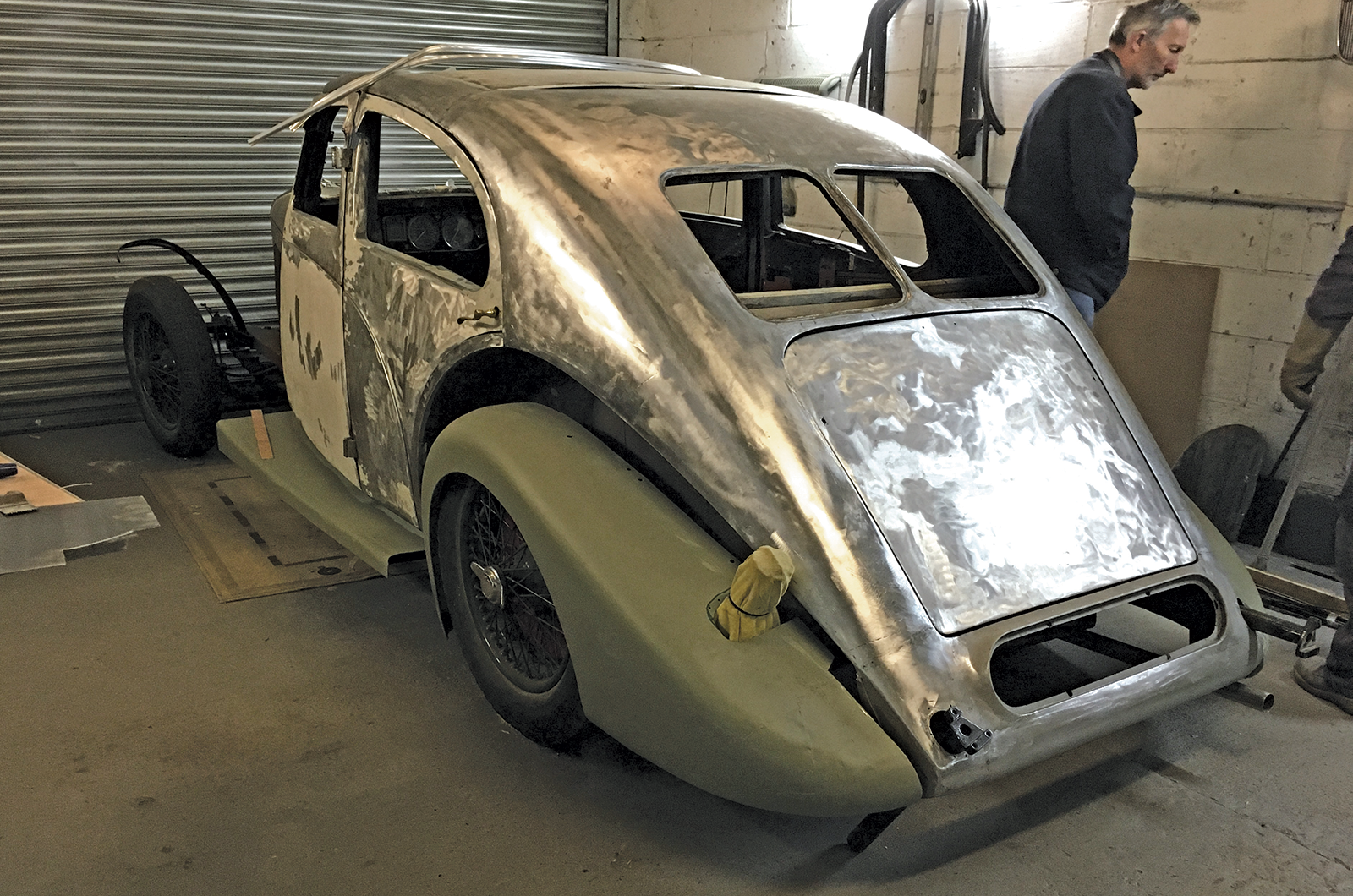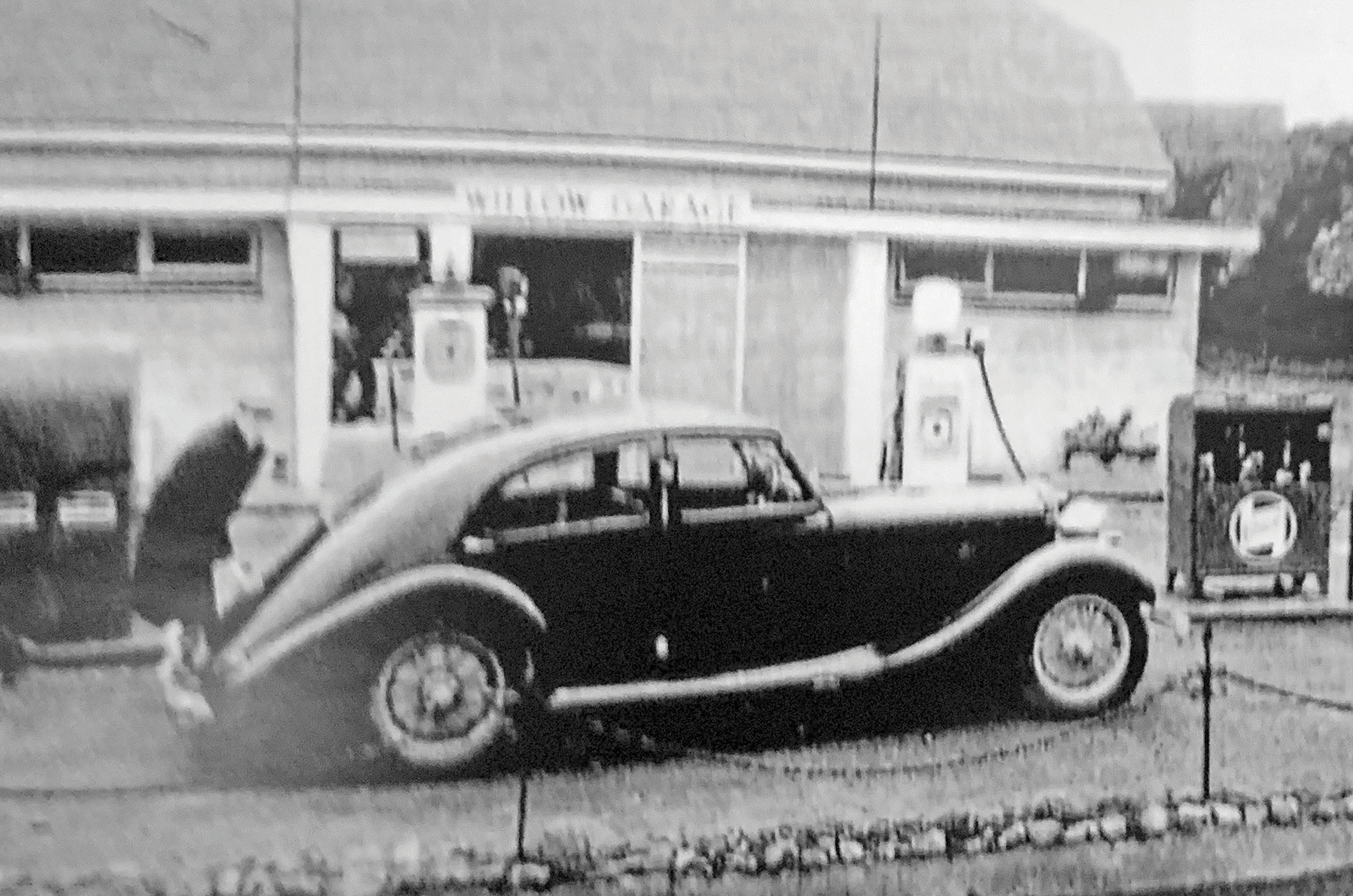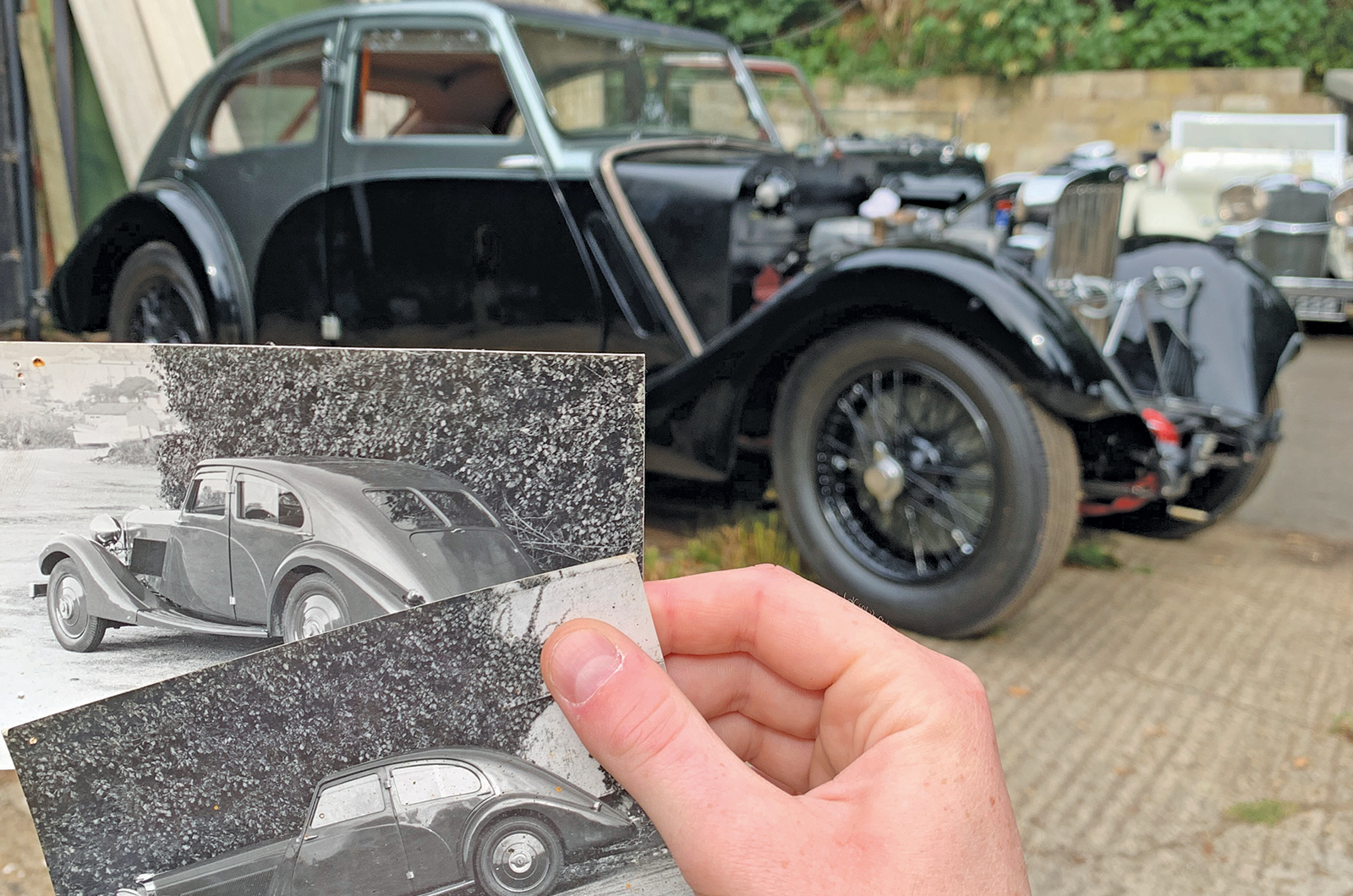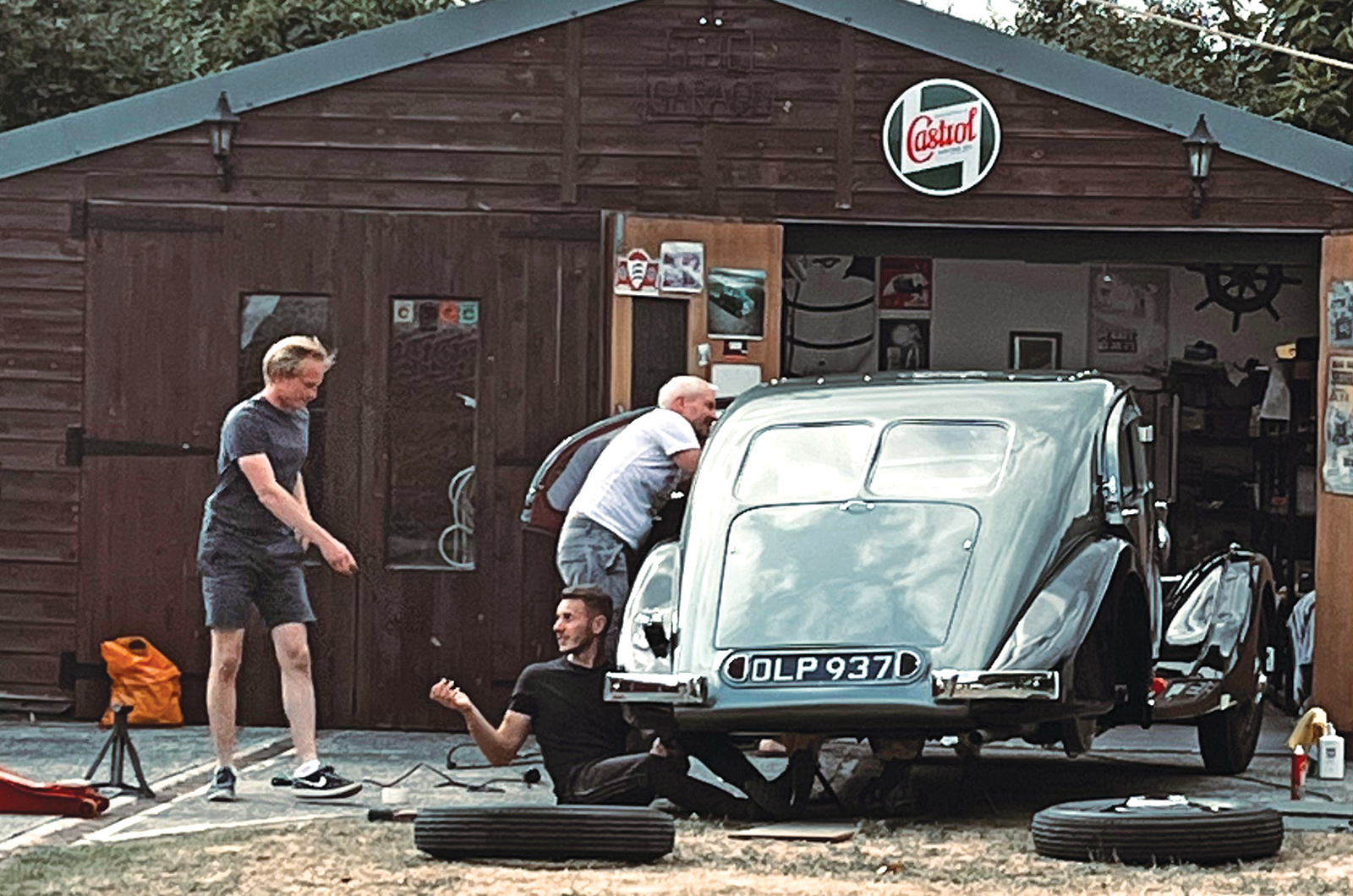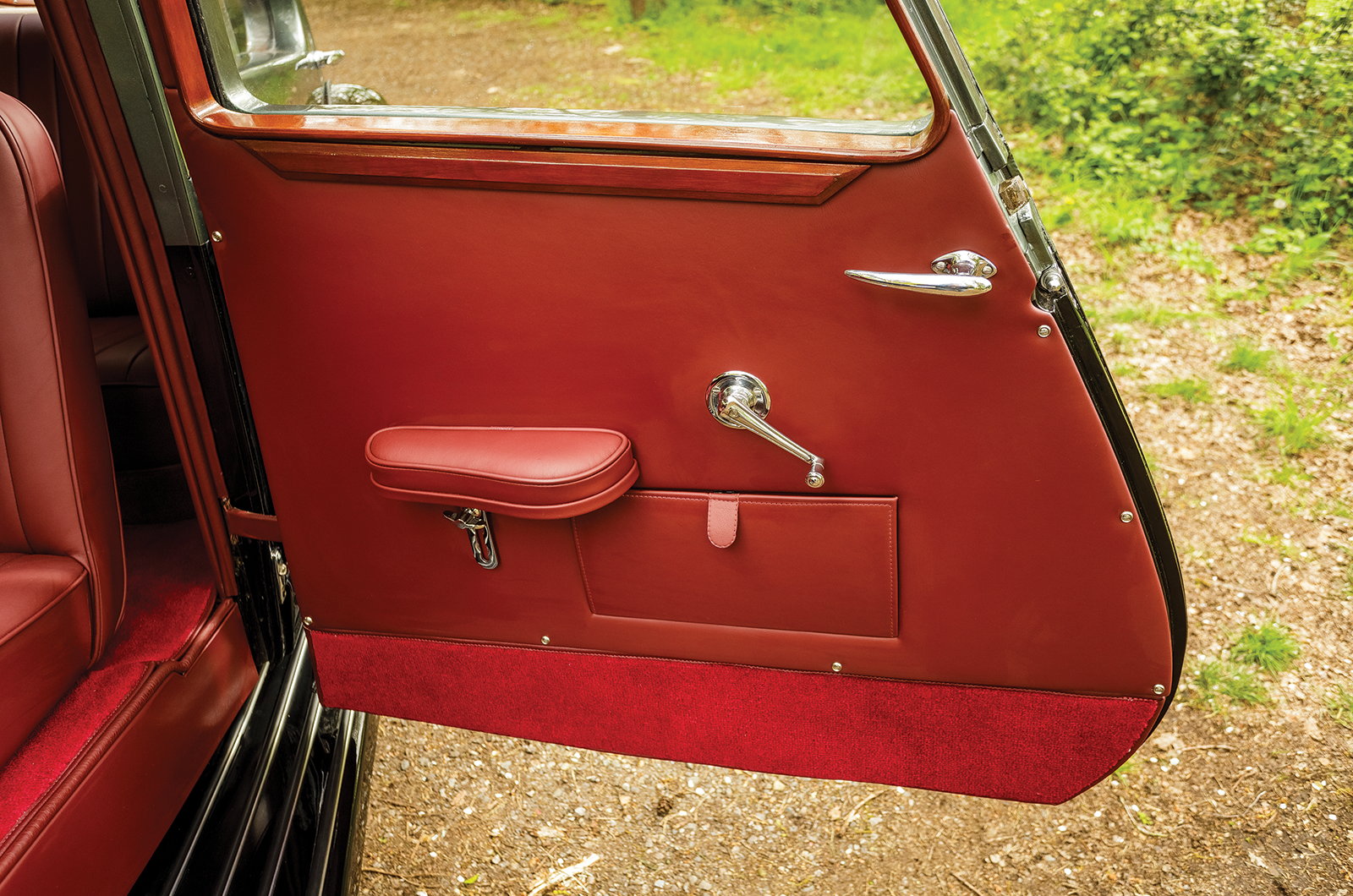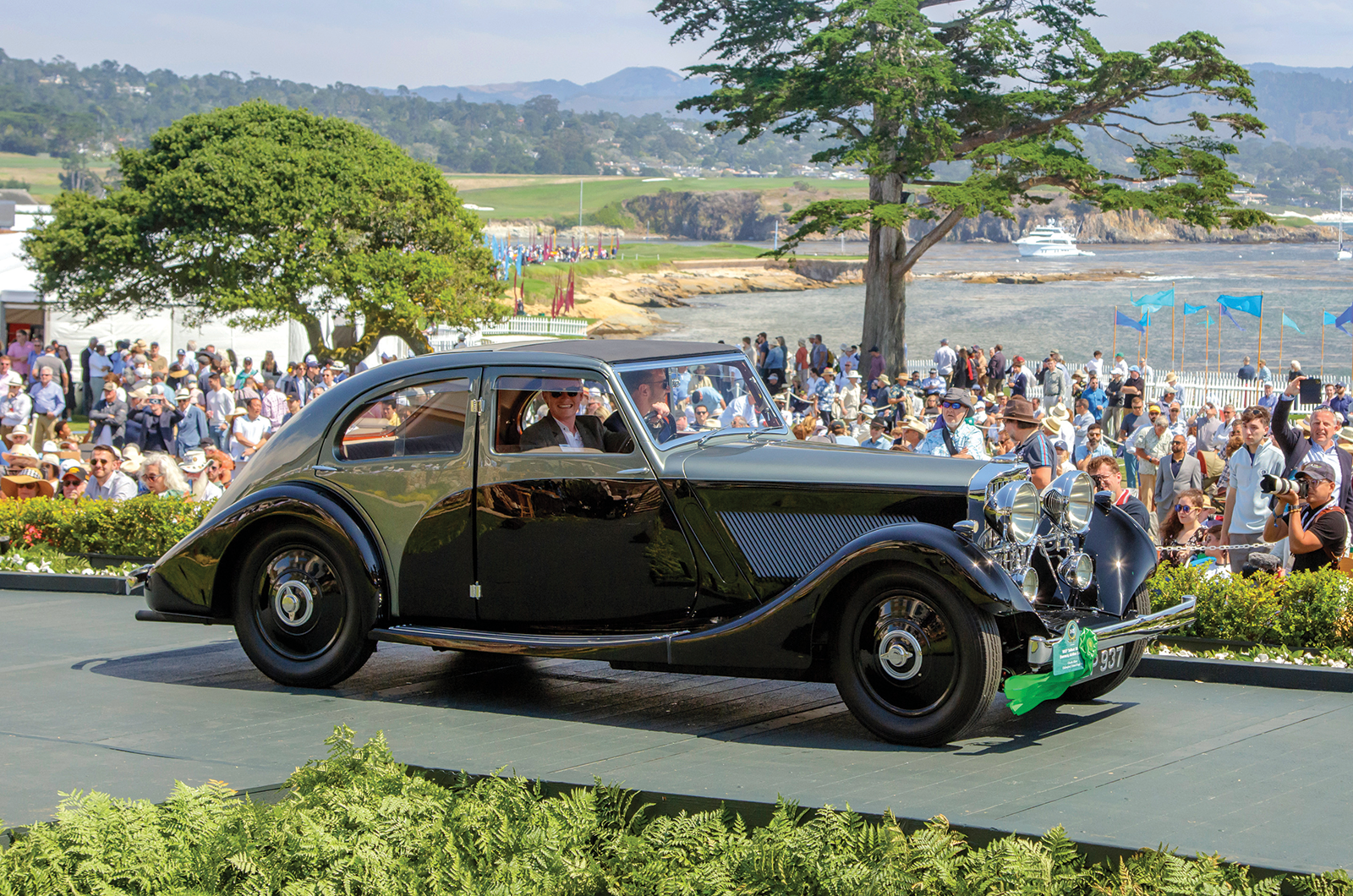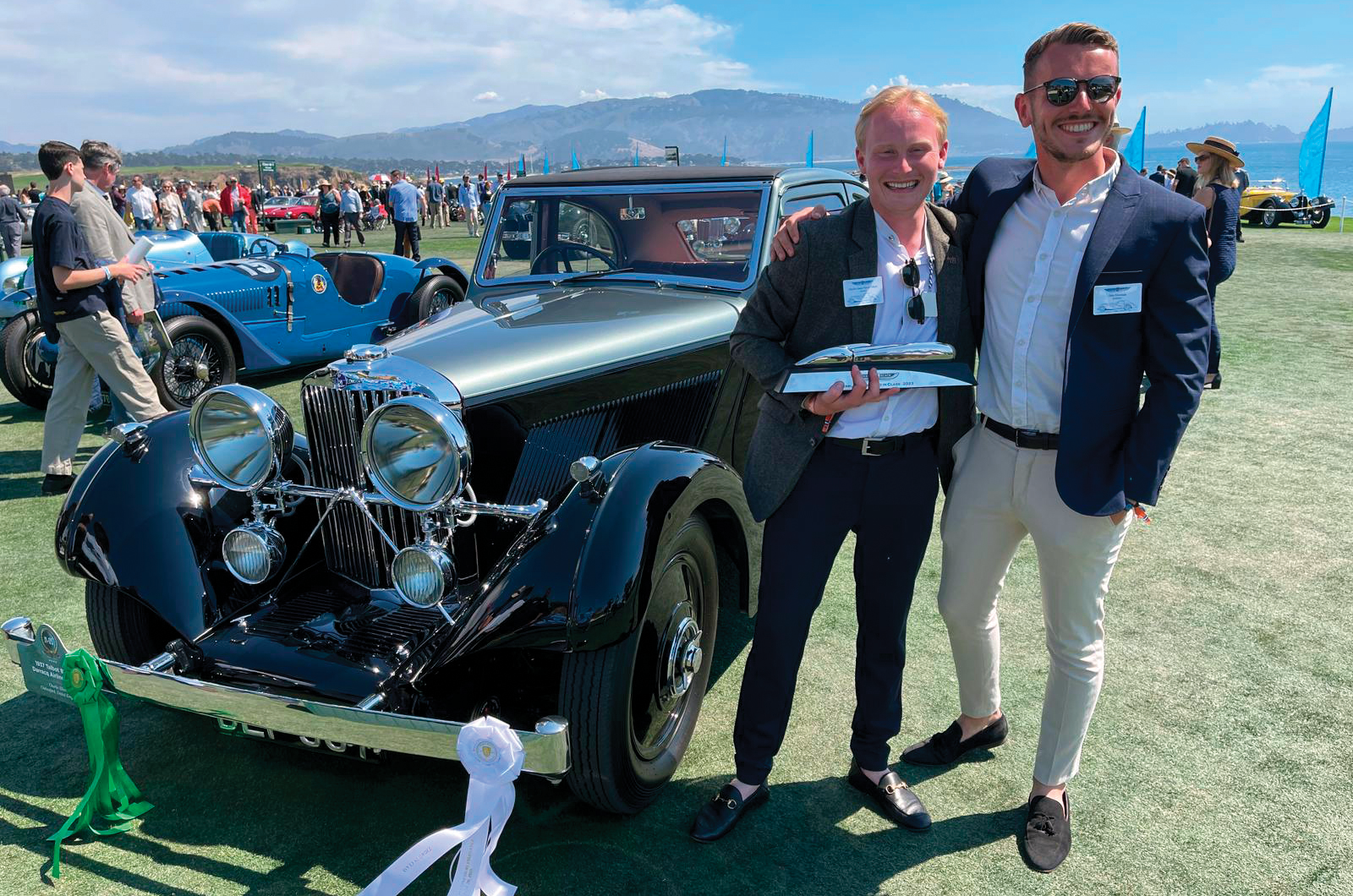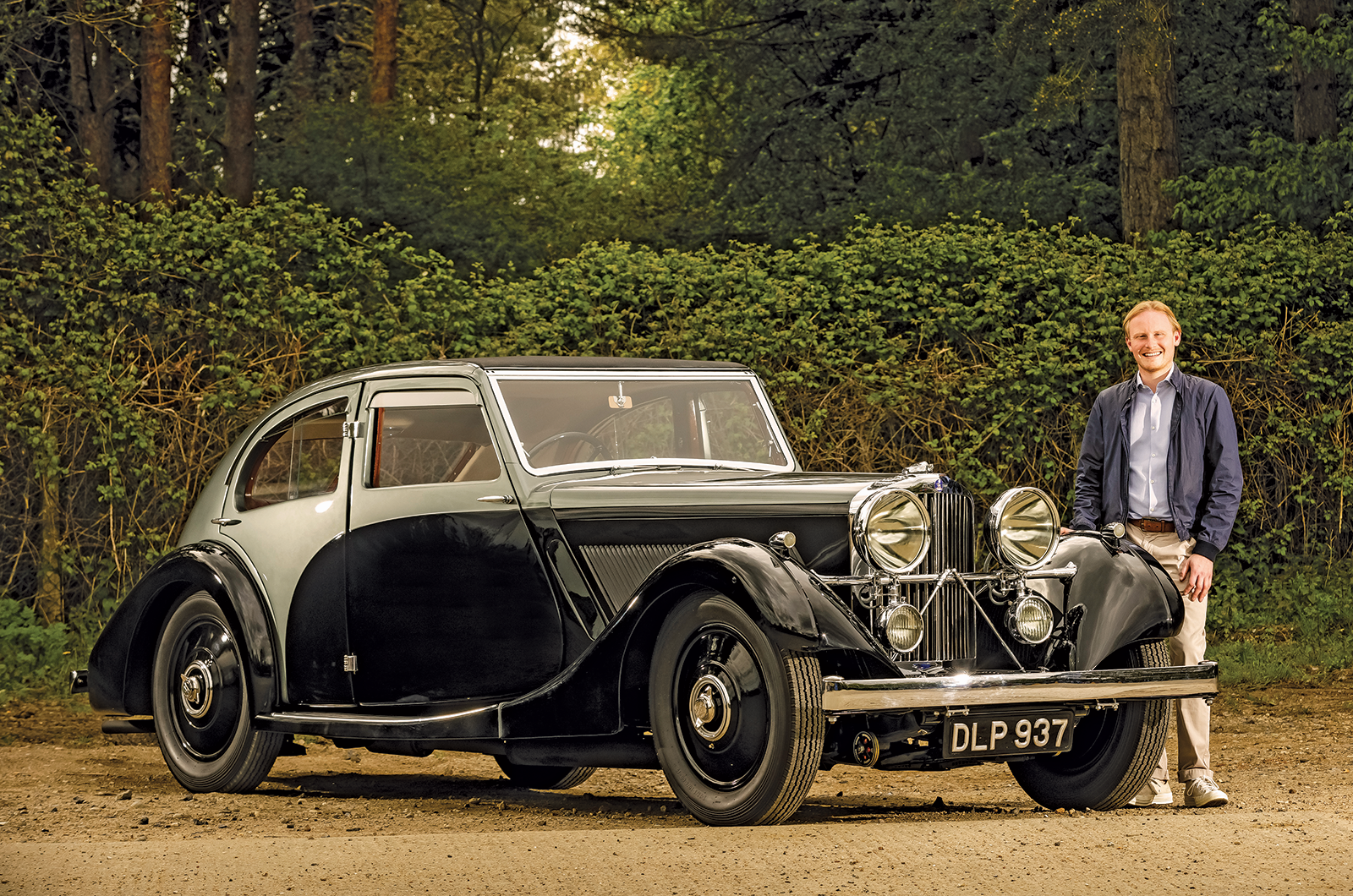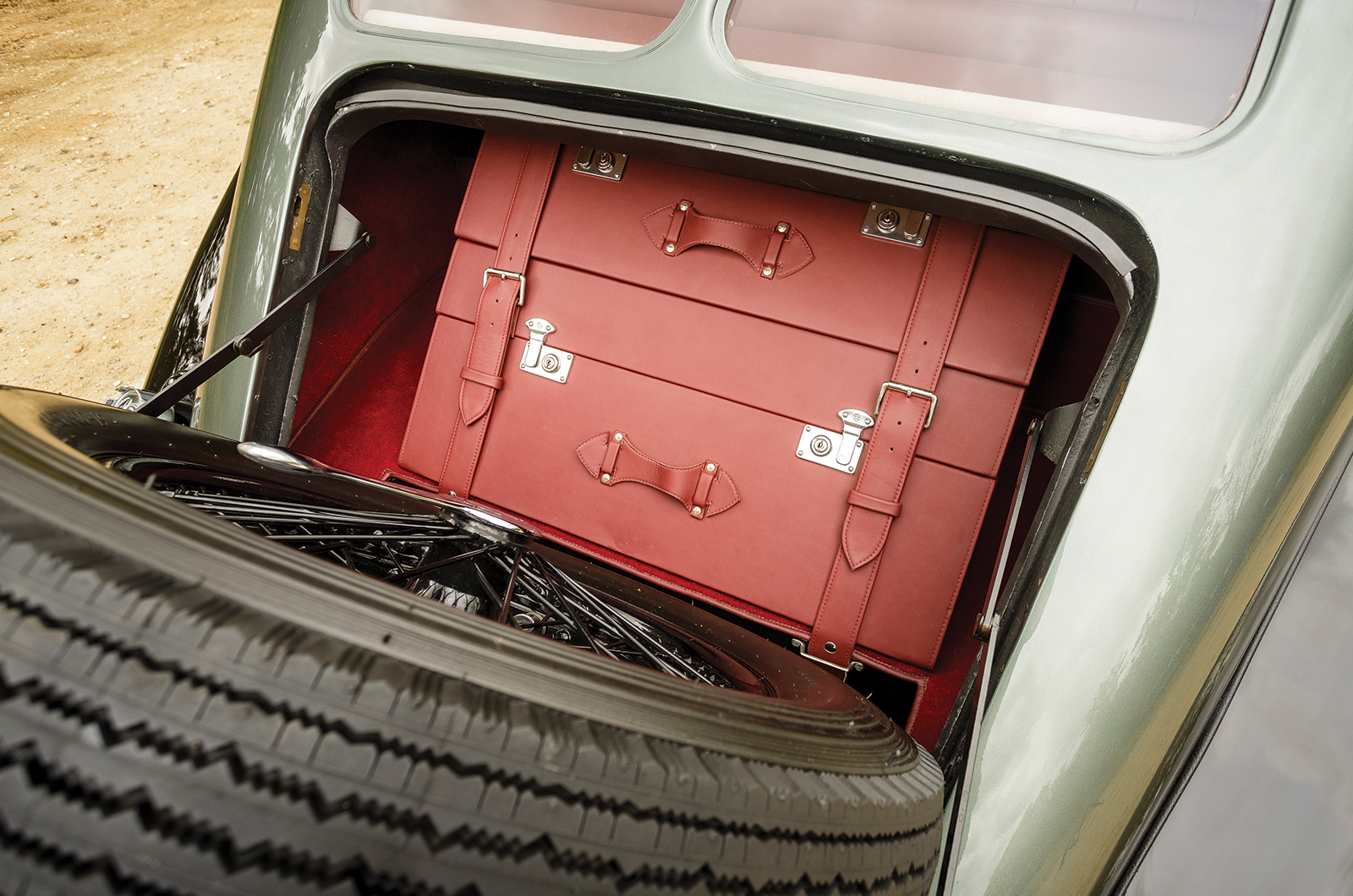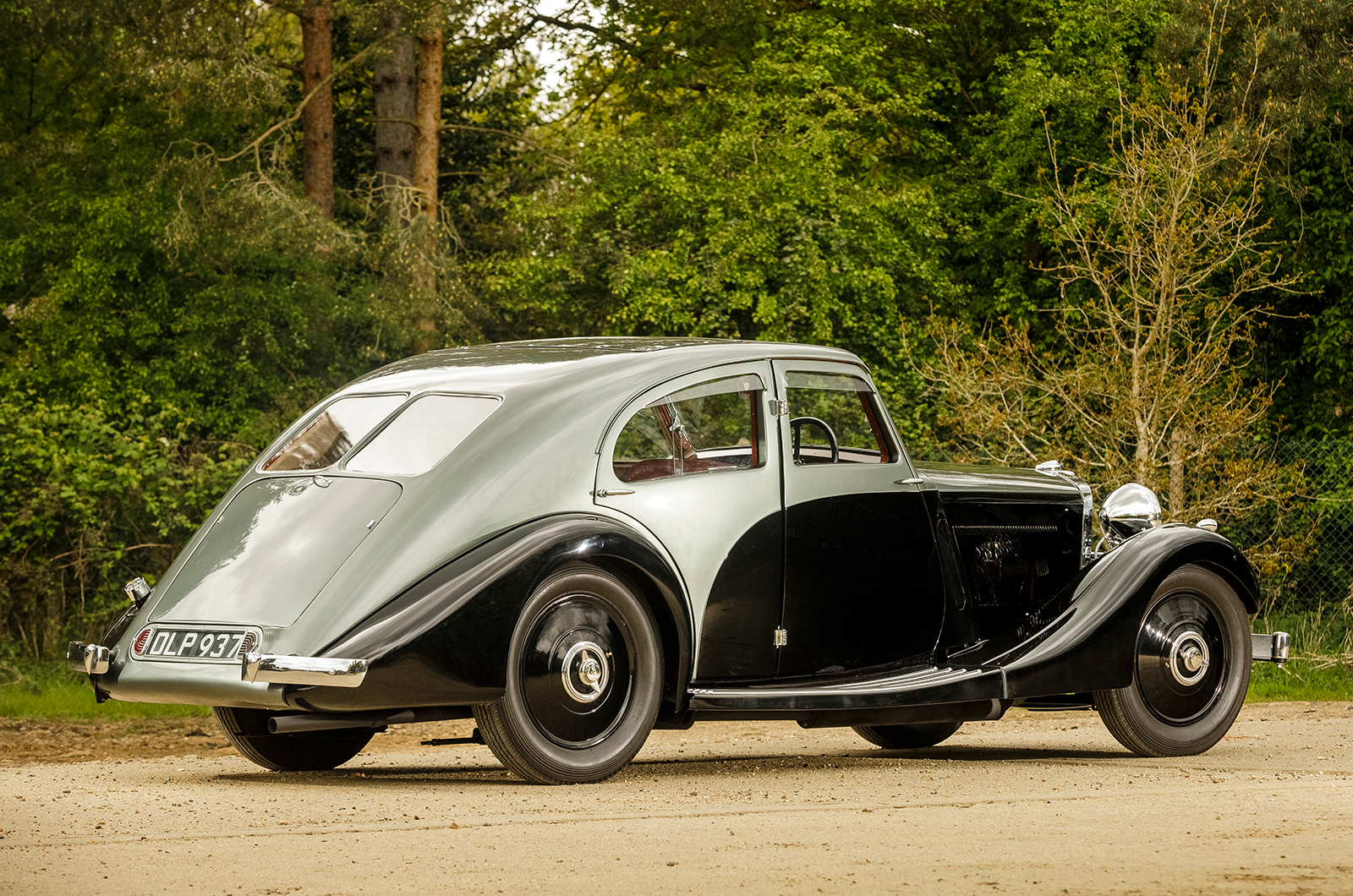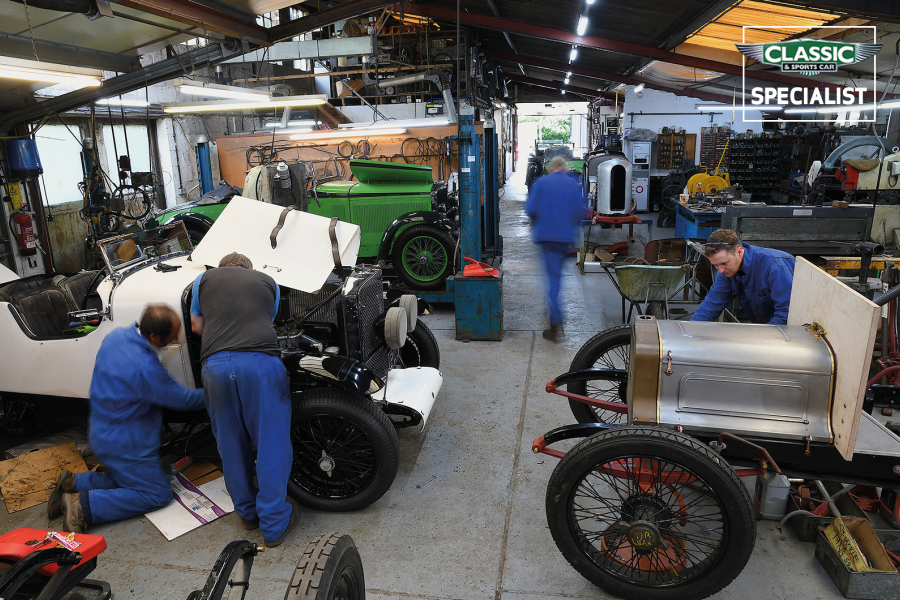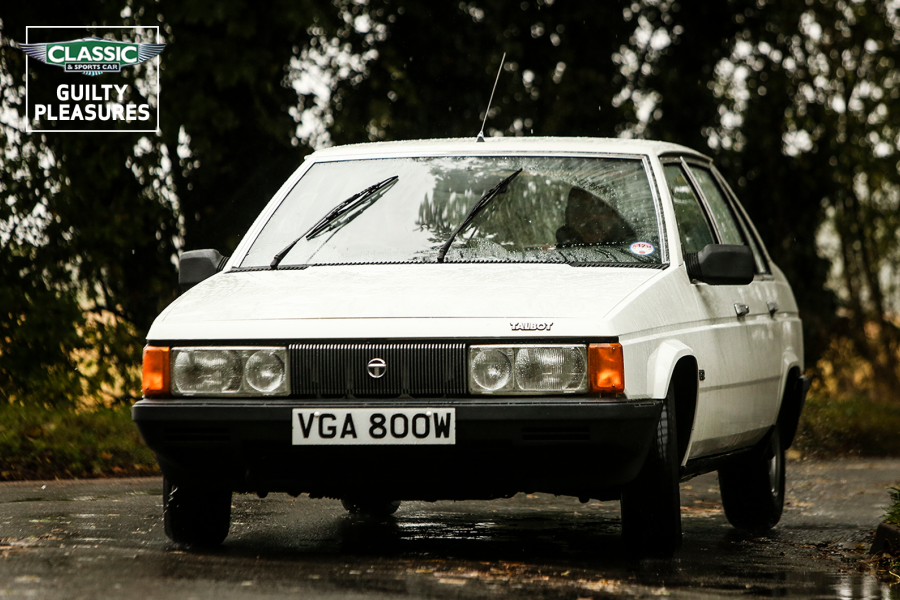The 105 Airline stayed in Wolverhampton with its next prospective saviour, but once again the sheer amount of work required proved to be overwhelming, and in 2017 the Talbot found its way to an H&H Classics auction at Duxford.
With its body panels held on by 14 (not period-correct) cable-ties, this sad-looking offering even caught the attention of The Sun newspaper: the reporter was shocked that such a wreck was estimated to make £30,000 when it crossed the block.
The winning bidder at just under that figure was then 21-year-old Charlie Elliott, from South Woodham Ferrers, Essex.
A strip-down revealed the Talbot’s rotten wood
“The bidding quickly went up to the top of my budget, and against advice I put my hand up one last time,” says Charlie.
“When we picked it up, I was shocked when I saw the delivery driver throwing in random bits of wood and metal that were apparently part of the car. How was I going to work out where they all went?
“No wonder my mum cried when she saw it on the trailer.”
The fact that her son had committed himself to a £30,000 bank loan only added to her anxiety.
The classic car’s ash frame was recreated by Charlie after a crash course in woodwork
“The most frustrating part was financing it,” Charlie continues. “I don’t come from money, so I relied on a lot of love and support from my family, helping achieve and believe in the dream.
“It was definitely a very emotionally charged restoration. The lack of parts, and the complex design of a lot of the components, was challenging; also, specialists’ timescales, because everyone who is good is busy.
“I was just lucky they all helped. A massive amount of time went into the details, which a lot of people skip: I really think they made the car.
“Details that people just made out of pictures.”
The Talbot 105 B1 Airline mid-restoration
One of the few positives was that the engine had already been rebuilt: Charlie and friend Jake Newman – an up-and-coming historic motorsport engineer – had it running in just a couple of days, but wisely decided that it needed to come apart again in the course of the restoration.
Although the Talbot was thought to be mainly complete, the Ace wheel discs were missing, among many other small items.
Charlie, a sales executive for BMW and MINI, was brought up around racing and vintage cars.
Between the ages of 11 and 16 he raced go-karts alongside some current members of the Formula One grid, and he started reading C&SC when he was just seven years old.
The Talbot 105 B1 Airline was registered in 1936 and lived first in London then later Wales; old photos provided useful reference
He bought the Talbot 105 as a tribute to his late maternal grandfather, David Mathison, who had died five years previously.
As a passionate Talbot fan, Mathison’s dream car had been a 105, and he’d owned a 14/45.
“He had pictures of Talbots all over the garage,” explains Charlie. “He always told me that the 105 was the best car you could ever own.”
Although in no way underestimating the task ahead, Charlie was heartened by the originality of the Airline and, alongside Jake, determined from the start to restore rather than replace wherever possible.
All hands on deck the day before the Talbot was shipped to Pebble Beach
The restoration turned into an epic, six-year challenge that consumed every penny Charlie had saved, everything he earned and all his spare time, with sessions in his late grandfather’s garage often going on until the small hours, accompanied by Jake and his great uncle John Gaught, a resourceful ex-BT engineer.
“If he couldn’t do something, he always knew somebody who could,” says Charlie. Jake’s dad, Graham, and Charlie’s dad, Paul, also pitched in.
Specialists were consulted when required, naturally: the door hinges, for example, were milled from solid brass by a machine shop.
But when it came to the wooden body frame, Charlie got a carpenter to show him how to make a single strut and then they did the rest themselves.
‘The views out are good for a closed pre-war saloon, with two large squares of glass for a rear window’
“Neil Tadman did the interior almost as a tribute to his father, who used to trim Bentleys and other vintage cars,” says Charlie. “Neil now only really does Porsche 356s.”
Other honourable mentions go to Foppe d’Hane of DVP Restorations, who supplied parts and advice, and Paul Cooper of Cooper Engineering, who did much of the fabrication.
To fund the rebuild, Charlie and Jake even began restoring and dealing old cars, ploughing the profits back into the project.
“It was my insanity that pushed the job through,” Charlie admits. “That and the deadline imposed by an invitation to Pebble Beach in 2023.”
The Talbot 105 B1 Airline’s interior was retrimmed to a superb standard by Porsche 356 specialist Neil Tadman
“The engine was done by Lee Langstone, and without his help it would have never made it there,” Charlie continues.
“It was still in pieces just days before it was due to be shipped. When it landed in the USA, we had only done a two-mile test drive in the car!”
At Pebble Beach, most entrants had teams of professional valeters cleaning their cars.
“We did it ourselves,” says Charlie, “with the added problem of having to pull the horn apart to get it to work because we hadn’t had time to check the electrics.”
A special moment as Charlie and the Talbot mount the Pebble Beach rostrum to take third in class (left); Charlie and Jake celebrate
“But we had the best week,” he adds, “and the Americans are so nice: the only snooty ones were the English.
“We later went past one of them, broken down, when we did the Tour d’Elegance, but our car didn’t miss a beat.”
The Team Elliott Talbot 105 came third in the European Classic Sport class.
As it purred on to the famous rostrum, Charlie must have felt a world away from his beloved grandad’s garage and the cable-tied wreck with which the youngster had apparently stitched himself up six years earlier.
Such grit, commitment and resourcefulness are rare at twice Charlie’s age.
“It was my insanity that pushed the job through. That and the deadline imposed by a Pebble Beach invitation”
In the metal, the Talbot is rakishly handsome and low-slung for a ’30s car.
It would have been considered very quick 80-plus years ago, being good for nearly 90mph and almost 70 in third.
With the front doors open, the depth of the sturdy chassis is very obvious and the seating is close-coupled.
The pillowy crimson leather front chairs meet in the middle (just in case you want to take a very skinny third passenger) and look almost too big for the car.
They are still taut with horsehair stuffing and don’t give much, so this is one pre-war machine in which you probably could not wear your trilby while driving.
The rebuilt Talbot 105 B1 Airline had covered only two miles before heading to Pebble Beach
The views out are good for a closed pre-war saloon, with two large squares of glass for a rear window and commanding views along the grand bonnet.
The two-tone, gunmetal-over-black livery (by Jay Adam of JMA – the Talbot was his first vintage car) was arrived at after a patch of original paint was found on the windscreen pillar, and it suits the shape nicely.
Under the bonnet, the engine is a tall, shiny black enamel box of neat but unassuming appearance.
There are twin horns (loud and soft) and a handy drain tap for the sump.
The steering box and valve covers are magnesium for lightness, but impossible to weld.
The luggage set was standard for this Talbot
On the move, the B1 Talbot is a pleasing combination of refined stateliness and poised sportiness.
The engine is smooth and very flexible, although the preselector masks the latter quality to a certain extent.
The steering is incredibly light once motoring and, at two and a half turns between decently compact locks, pretty high-geared.
There is nothing particularly hefty or unwieldy about handling the car, which sweeps up the road with an eager mutter of straight-six refinement.
Steering-wheel-mounted switches include the gearbox’s preselector and headlight controls
The brakes are great, too – it’s to do with the self-servo action of the leading shoe essentially locking to the drum – and the ’box makes changing easy, coming from an era when most cars still had crash ’boxes that required skill to use quietly.
The ‘traffic clutch’ engages at 900rpm, so you can sit in queues with your foot on the brake, in first and ready to go, just like in a normal automatic.
Up or down the ’box it makes for super-quick changes: you can move the little lever on the quadrant without taking your hand off the steering wheel, then use the ‘clutch’ when you want to select the required ratio.
That such a young person had the confidence to take on an 80-year-old restoration project, knowingly in the footsteps of three failed previous attempts, is remarkable to say the least.
The fact that the Airline won a coveted invitation to Pebble Beach last year – and came third in its class – is just the cherry on top of a truly inspiring cake.
Images: Tony Baker; Charlie Elliott archive; H&H Classics; Pebble Beach Concours d'Elegance
Factfile
Talbot 105 B1 Airline
- Sold/number built 1935-’37/97
- Construction steel ladder-type chassis, aluminium body over ash frame
- Engine all-iron, ohv 2969cc monobloc straight-six, downdraught Zenith carburettor
- Max power 119bhp @ 4800rpm
- Max torque n/a
- Transmission four-speed preselector, RWD
- Suspension: front rigid axle rear live axle; semi-elliptic leaf springs, Luvax/Hartford dampers f/r
- Steering worm and nut
- Brakes drums
- Length 16ft (4877mm)
- Width 5ft 8in (1727mm)
- Height 5ft (1524mm)
- Wheelbase 10ft (3048mm)
- Weight 4256Ib (1930kg)
- Mpg 16
- 0-60mph 19 secs
- Top speed 89mph
- Price new £625
- Price now £500,000*
*Price correct at date of original publication
Enjoy more of the world’s best classic car content every month when you subscribe to C&SC – get our latest deals here
READ MORE
Concours sensation: Talbot-Lago T26 Grand Sport
Your classic: Talbot-Lago T23 Grand Luxe
Rolls-Royce Phantom III: excellence at all costs
Martin Buckley
Senior Contributor, Classic & Sports Car

